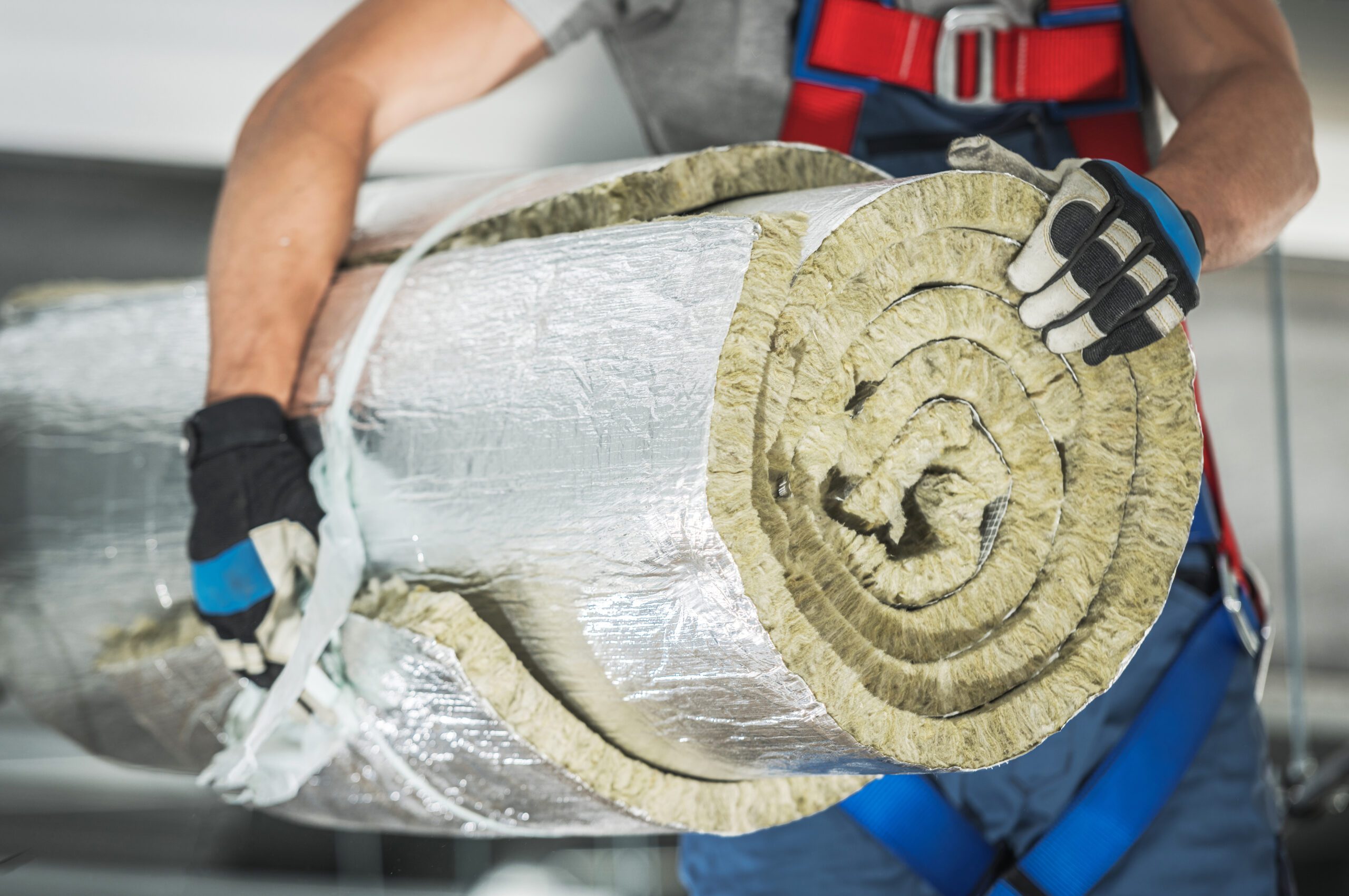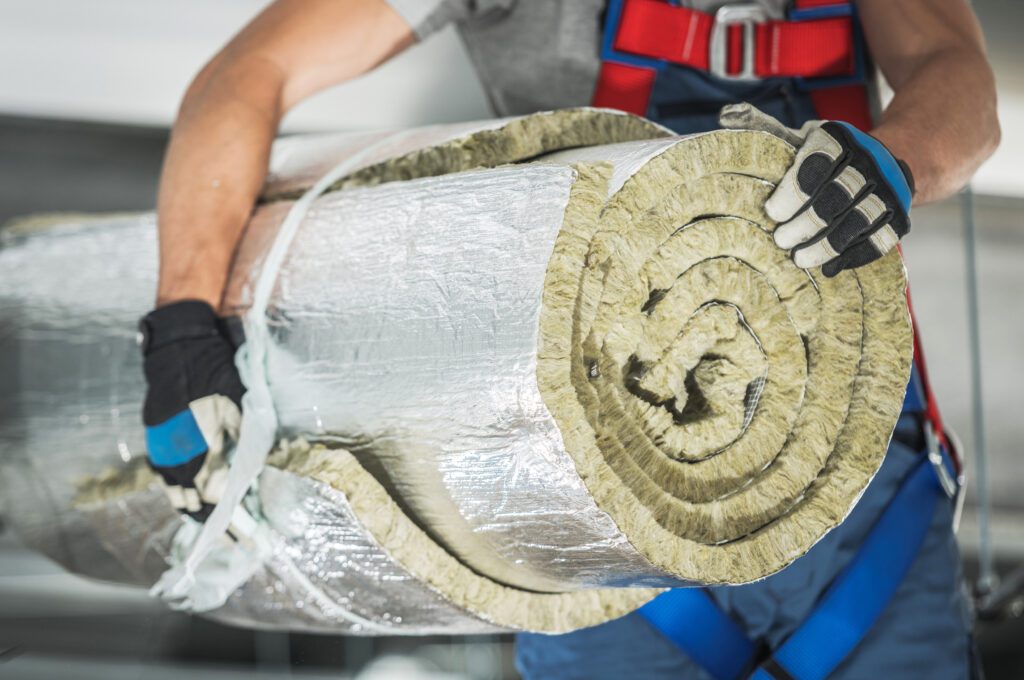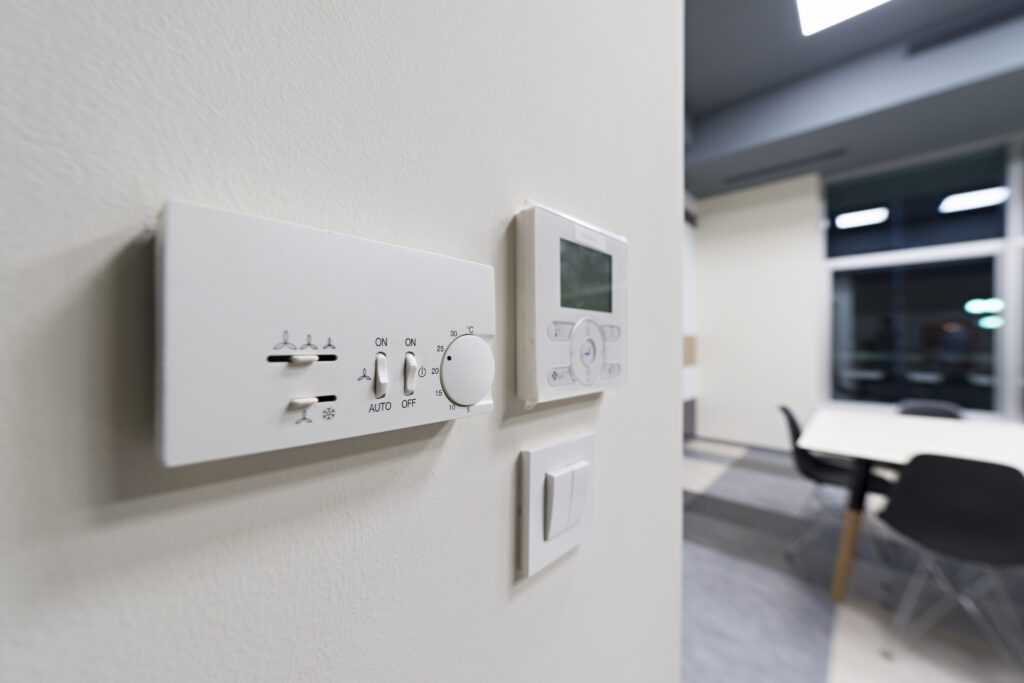

As the winter season approaches and temperatures begin to drop, businesses are faced with the challenge of keeping their offices warm while also trying to conserve energy and lower utility costs. What’s more, energy conservation has become a top priority for many companies. Not only does it benefit the planet, but it can also save businesses a significant amount of money in the long run.
In this blog post, we will discuss five simple yet effective tips to help conserve energy in the workplace during the winter months, allowing you to keep your office warm without breaking the bank.
First, let’s review what you can’t readily see—insulation.
Proper insulation is essential in keeping your office warm during the winter months. Without adequate insulation, you’ll find that the cold air seeps in and the warm air escapes, resulting in an uncomfortable and chilly working environment. It’s not only uncomfortable for your staff, customers and other occupants, but also puts a strain on your heating system, leading to higher energy consumption and increased utility costs.

Even the smallest amount of additional insulation can make a significant difference on your comfort and energy bills.
To ensure proper insulation of your facility, start by checking for any drafts or air leaks. Common areas for air leaks include windows, doors, and gaps around pipes and electrical outlets. Seal these gaps with weatherstripping or caulking to prevent cold air from entering and warm air from escaping. You can also use window insulator kits to create an additional barrier against the cold.
Another crucial aspect of insulation is checking your walls and ceiling. If you have access to the attic or crawl spaces, inspect them for insulation and ensure it’s in good condition. Insulation helps trap heat, so if it’s old or worn out, it won’t be as effective. Consider adding more insulation if needed to improve heat retention and prevent energy loss.
In addition to insulating your facility, it’s important to also insulate the heating system itself. Check the ductwork for any leaks or loose connections and seal them properly. Insulating the pipes that carry hot water or steam can also help minimize heat loss during distribution. These simple steps can significantly improve the efficiency of your heating system and reduce energy waste.
In addition to insulation, another simple yet effective way to conserve energy in your facility during the winter is to simply be smart about temperature settings.
Many organizations make the mistake of cranking up the heat to high temperatures in an effort to keep everyone warm. While noble, this effort can lead to unnecessary energy consumption and inflated utility bills. Instead, consider lowering the thermostat by a few degrees. Even a small adjustment can make a significant difference in energy usage and cost savings.
To ensure the comfort of your employees, encourage them to dress in warm layers. Sweaters, scarves, and blankets can go a long way in keeping individuals warm without relying solely on the heating system. Additionally, provide space heaters for high-traffic areas if necessary, rather than heating the entire building.
Another strategy to conserve energy is to utilize programmable thermostats. These devices allow you to schedule temperature adjustments throughout the day based on occupancy.

Programmable thermostats are a simple yet effective way to improve the energy efficiency of your facility.
By reducing the heat during non-working hours or lowering it when occupants are away for meetings, for instance, you can save energy without sacrificing comfort during peak working hours. These advanced devices can also optimize energy usage and automatically adjust temperature settings based on weather conditions as well.
Lest we forget about using something widely available and free to everyone—natural light! Not only does natural light create a pleasant and uplifting atmosphere, but it also reduces the need for artificial lighting, resulting in energy savings.
To maximize natural light in your organization, start by positioning furniture and public seating areas near windows and open blinds or curtains during the day. This allows sunlight to flood the space, providing ample illumination and reducing the reliance on electric lights. Consider rearranging furniture and removing any obstructions that may block sunlight from entering the building.

Relocating your facility’s furniture to take advantage of natural light is 100% free—and an easy way to maximize efficiency!
Another effective strategy is to paint the walls in light, reflective colors. Pale shades such as white or light gray can bounce natural light around the room, making it feel brighter and more spacious. Avoid dark or saturated colors, as they absorb light and can make the space appear gloomy.
If your building has limited access to natural light or small windows, consider installing skylights or light tubes. These fixtures allow natural light to flow into areas that may not have direct access to windows, creating a more vibrant and inviting atmosphere.
In addition to maximizing natural light, it’s important to optimize artificial lighting as well. Replace old, inefficient light bulbs with energy-efficient options such as LED or CFL bulbs. These bulbs not only use less energy but also last longer, reducing the frequency of replacements. Finally, install motion sensors or timers to automatically turn off lights in unoccupied areas, preventing unnecessary energy waste.
Another way to conserve energy in any business or organization during the winter is to adopt energy-efficient practices and equipment. By making simple changes and upgrades, you can significantly reduce energy consumption and lower your utility costs. Here are some tips to help you get started:
To truly achieve energy conservation in any organization during the winter months, however, it’s crucial to foster an energy conservation mindset among your employees. While implementing energy-efficient practices and upgrading equipment is essential, it’s the collective effort and commitment from everyone that will make a lasting impact. Here are some tips to encourage an energy conservation mindset among your staff:
Remember, creating an energy conservation mindset in any organization is a continuous process. Encourage open dialogue, seek feedback, and adapt your strategies accordingly. With a collective effort, your staff can become ambassadors of energy conservation, helping to create a more sustainable and environmentally friendly workplace.
As winter approaches, it’s essential for businesses and organizations to prioritize energy conservation while keeping their facilities warm. By following these five simple yet effective tips, you can ensure a cozy and energy-efficient facility without breaking the bank.
First and foremost, proper insulation is crucial in maintaining a warm facility and preventing energy waste. Take the time to seal any drafts or air leaks around windows, doors, and pipes. Additionally, check the condition of your walls and ceiling insulation and add more if needed. A well-insulated facility not only saves energy but also creates a comfortable working environment.
Next, be smart about temperature settings. Lowering the thermostat by a few degrees and encouraging your staff to dress warmly can make a significant difference in energy usage and cost savings. Utilizing programmable or smart thermostats can also optimize temperature settings based on occupancy and weather conditions.
Maximizing natural light is another effective strategy for energy conservation. Position furnishings near windows, open blinds or curtains, and consider painting walls in light, reflective colors. Additionally, consider installing skylights or light tubes to bring natural light into areas with limited access to windows. By reducing the reliance on artificial lighting, you can save energy and create a brighter and more inviting facility.
Don’t forget to adopt energy-efficient practices and equipment. Upgrade to energy-efficient appliances, enable power-saving features on devices, optimize computer settings, and encourage a paperless facility. These simple changes can make a significant impact on energy consumption and utility costs.
Lastly, foster an energy conservation mindset among your staff. Raise awareness, provide training, set goals, lead by example, and communicate regularly to keep everyone engaged and motivated.
Conserving energy in any business or organization during the winter is not only environmentally responsible, but also cost-effective. So, embrace these tips and enjoy the benefits of a warm facility while also making a positive impact on the planet and your bottom line. Contact us to learn more about our commercial solutions for your business or organization at Valiant Energy Solutions.